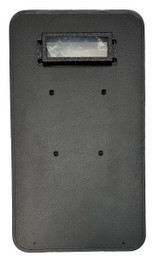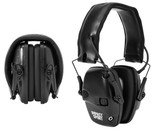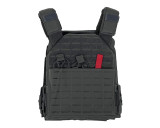How to choose tactical clothing - Battle Steel®️
How to choose tactical clothing
Tactical clothes initially designed solely for military purposes have become a popular wear style today. You can see military and tactical style clothes on virtually everyone now: on men and women, on young girls and worldly elders. However, this does not mean tactical clothing has lost its original purpose. Many people go to a tactical clothing store for a sole reason: to purchase a wear that is good enough for some specific applications like law enforcement, tactical operations, sports, hunting and so on.
Do you know how to choose tactical clothing? In this article we will guide you through the basics of this process.
What does “tactical” means in the first place?
Tactical clothing is a type of outdoor wear specially designed to simplify tactical activities and modified so to make clothing more functional. Compared to conventional everyday pants and shirts, tactical clothes do not impede your mobility, allowing for more freedom of movement in various situations. Also, such clothes are more comfortable in everyday tasks due to special fabrics and designs used. What’s also important, tactical clothes are typically highly practical and durable.
The whole purpose of tactical outfit is to make it as functional as possible. Literally, tactical clothes are the second most important factor after body armor that allows you to have an edge in many potentially dangerous situations. That is why it is so important to pay close attention to selecting your tactical clothing – your mission, your abilities, and even your life may depend on that!
What are types of tactical clothes
While manufacturers offer a wide range of tactical clothes for every part of your body, in general we can consider these main tactical clothing types:
- Tactical shirts. Tactical clothing designed for maneuverability and comfort in battle, during tactical operations, when working at range etc.
- Tactical pants. A well-known “cargo” design that perfectly blends wearer’s comfort with extra durability and versatility.
- Tactical footwear. Sturdy yet comfortable boots designed for better balance while shooting and extra grip while climbing with additional waterproof capabilities.
- Tactical gloves. Unlike your everyday gloves, tactical ones simplify aiming and shooting and deliver ultimate protection in close combat.
- Tactical apparel. This category includes sunglasses, backpacks, tactical belts, wristwatches and so on.
Here is what you should pay attention to when choosing tactical clothing
Selecting the right tactical clothing and gear can be a frustrating experience, especially if you aren’t particularly savvy. On one hand, you want to maximize your efficiency, and on the other hand you’d prefer to not waste your money purchasing merely a mimic of tactical civilian clothes with little to no real tactical value.
Here are some points to consider before you buy a set of tactical clothes.
1. Utility
The first thing to ask yourself is: what is the purpose of tactical clothes I am going to purchase? This may sound silly at first, like, “The purpose is to get myself decent tactical clothes, of course. What else?”
Well, there are tactical clothes and there are tactical clothes, if you know what I mean. And this makes a lot of difference. What is your primary activity the clothes are intended for? Is this law enforcement? Tactical operations? Patrol work? Are you a security officer or a policeman?
Shooting sports, training, hunting or hiking – all have their own peculiarities you should consider.
For example: tactical operations require better mobility so you can react quickly to any threat, so you should prefer clothes that do not hinder your freedom of movement in the first hand. And shooting sports may require more civil-looking tactical clothes because you probably don’t want to look like a gunslinger when you’re on a parking lot or in a mall.
2. Fabric
The fabric tactical clothing is made of varies greatly from model to model and from brand to brand. Overall, you should prefer synthetic fabrics over natural cotton. Nylon, spandex or polyether quickly absorb moisture and pass it away from your body keeping you comfortable. At the same, synthetic fibers are easier to clean and wash, especially outdoors, and are more durable.
However, avoid sticking to 100% synthetics. Combined fabric (cotton plus nylon) offers all the advantages of synthetic fiber, but also makes sure clothing fits comfortably on the body. Also, pure synthetic tactical clothing melts when exposed to flames resulting in extra burn damage to the wearer.
Depending on your job and its conditions you may want to consider tactical clothes made from different fabrics. For example, sleeves of a combat shirt can be made from a tear-resistant fabric to ensure better durability in a variety of situations, while the torso part can be 60/40 synthetic for more efficient thermoregulation and more comfortable fit.
3. Fit
One of the most important factors to consider is how tactical clothes fit. It is more than just feeling comfortable. You want your wear to become your second skin, metaphorically speaking. Freedom of movement is one of the most crucial factors. For instance, have you ever crouched and felt that peculiar tension on the knees of your jeans? This is exactly what we are talking about here: your mobility was hindered by your everyday clothes.
Proper fit of your tactical clothes ensure comfort, maneuverability, as well as unrestricted aiming. Unlike civilian clothes, tactical clothes have specially designed elements such as articulated knees on pants or raglan sleeves on a shirt for enhanced freedom of movement, or elastic waistband for better fit in dynamics.
4. Features
Maximum efficiency. This is the motto of true tactical clothes. And that is why almost every detail of such clothes pursues the objective to make its wearer as functional as possible, in every possible situation, whether on a shooting range or during a tactical operation. Examples of such smart details are quarter-zip on a shirt for easier put on/take off and also for better ventilation if needed, or a number of easily accessible pockets including shoulder pockets, cargo pockets, and specialized key pockets on the belt.
Depending on utility and the range of applications, there could be other functional elements you may want to look for on a set of tactical clothing you are to purchase.
5. Climate
It goes without saying, climate is a major factor to consider when choosing a set of tactical wear. Surely, you want to remain comfortable and able to do your job whether it’s sunny or rainy, hot or cold outside. Your clothes must serve you well in any climate zone and in any weather. While there are no 100% versatile clothes suitable for any climate from Africa to Antarctica, you still should take local climate and weather into account.
If working in hot climates, you’d prefer better ventilation of your body. Choose tactical clothes made of “breathing” fabrics to prevent overheating. Sunny weather requires reflective clothes. Colder climates may force you to include some thermals into your outfit, while layered clothing is indispensible when the weather varies greatly during a day, so you can take off some clothing or put it back at any time.
6. Durability
Tactical clothes have one more distinct difference from similarly looking civilian pants and shirts. Durability. Tactical clothes are made to withstand really hard tensions and extreme conditions. Here are some elements you should pay attention to when selecting tactical clothing in a store.
- Reinforced elbows and knees. Patches of extra-resistant fabric on your knees and elbows prevent tearing of your clothing caused by sharp movements or friction when you crawl or climb. You can adopt any pose you need to perform your duty without fear of ripping your clothes.
- Extra stitching of elements exposed to stress. Armpits of your tactical shirt and the seat of your pants have extra stitching to prevent embarrassing situations in public after your workday is over.
- Reinforced belt loops. Your belt holds your gun, a radio set, a flashlight and other weighty equipment. Tactical clothes are designed to deal with that load easily thanks to harder stitches of bet loops.
Let’s conclude
Tactical clothes are rather different from your typical “military-like” outfit, so choosing them wisely is a must. In this article we have outlined main features of tactical clothes and factors you should take into account to buy really good and reliable tactical clothes for your duty. If you have other questions or need assistance in selecting the optimal model for your job, please don’t hesitate to contact us.
Recent Posts
-
Understanding Ballistic Shield Ratings and Their Applications
The Trusted Name in Tactical Defense - BattleSteel® When it comes to protecting those who protect us …2025-04-19 -
The Importance of Hearing Protection in Tactical Environments
The Legacy of BattleSteel® BattleSteel® is a trusted name in the world of tactical defense equipment …2025-04-14 -
How to Properly Fit and Wear a Plate Carrier
About BattleSteel and Their Mission BattleSteel is a trusted name in the tactical gear industry, ren …2025-04-11


